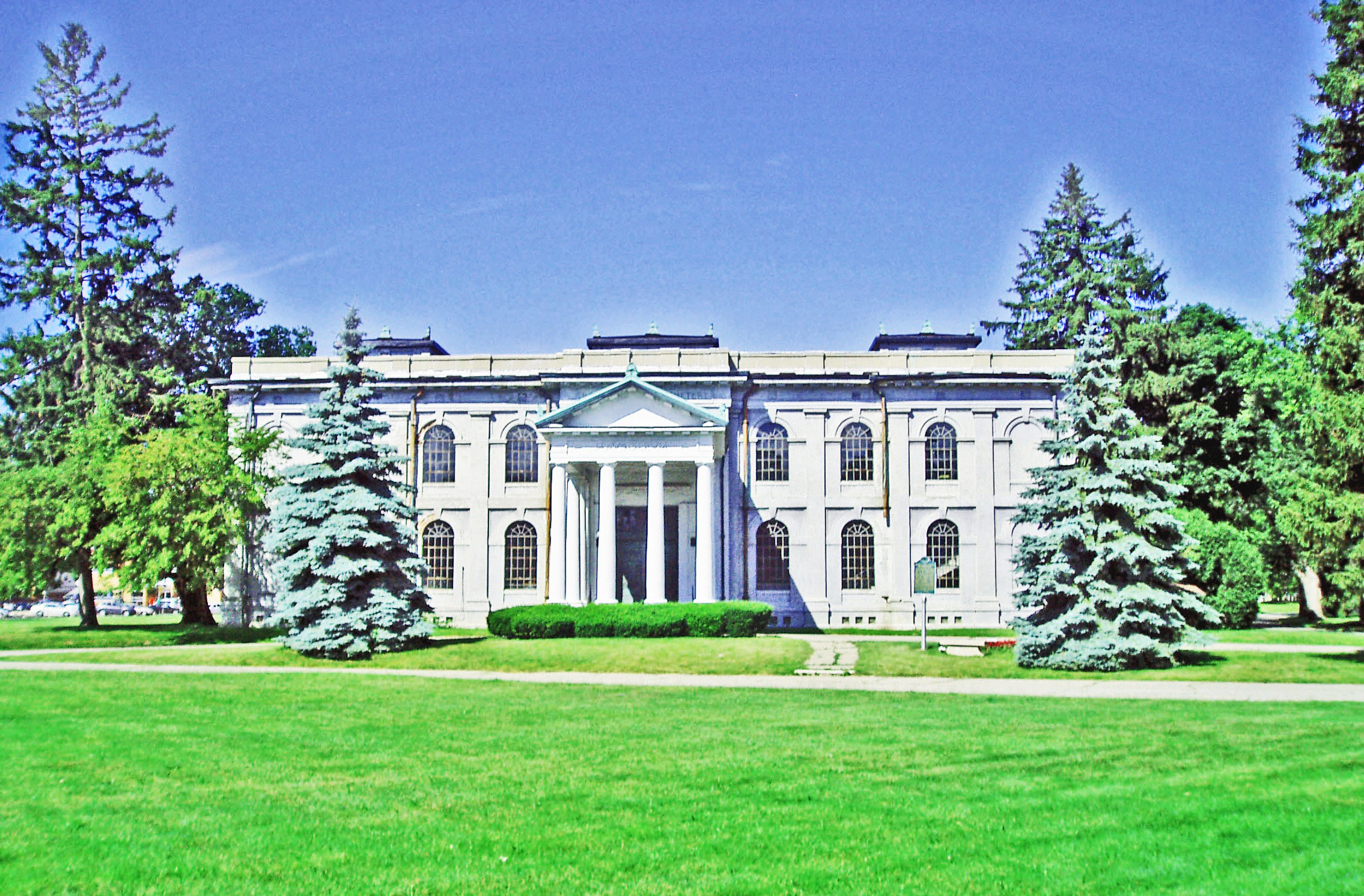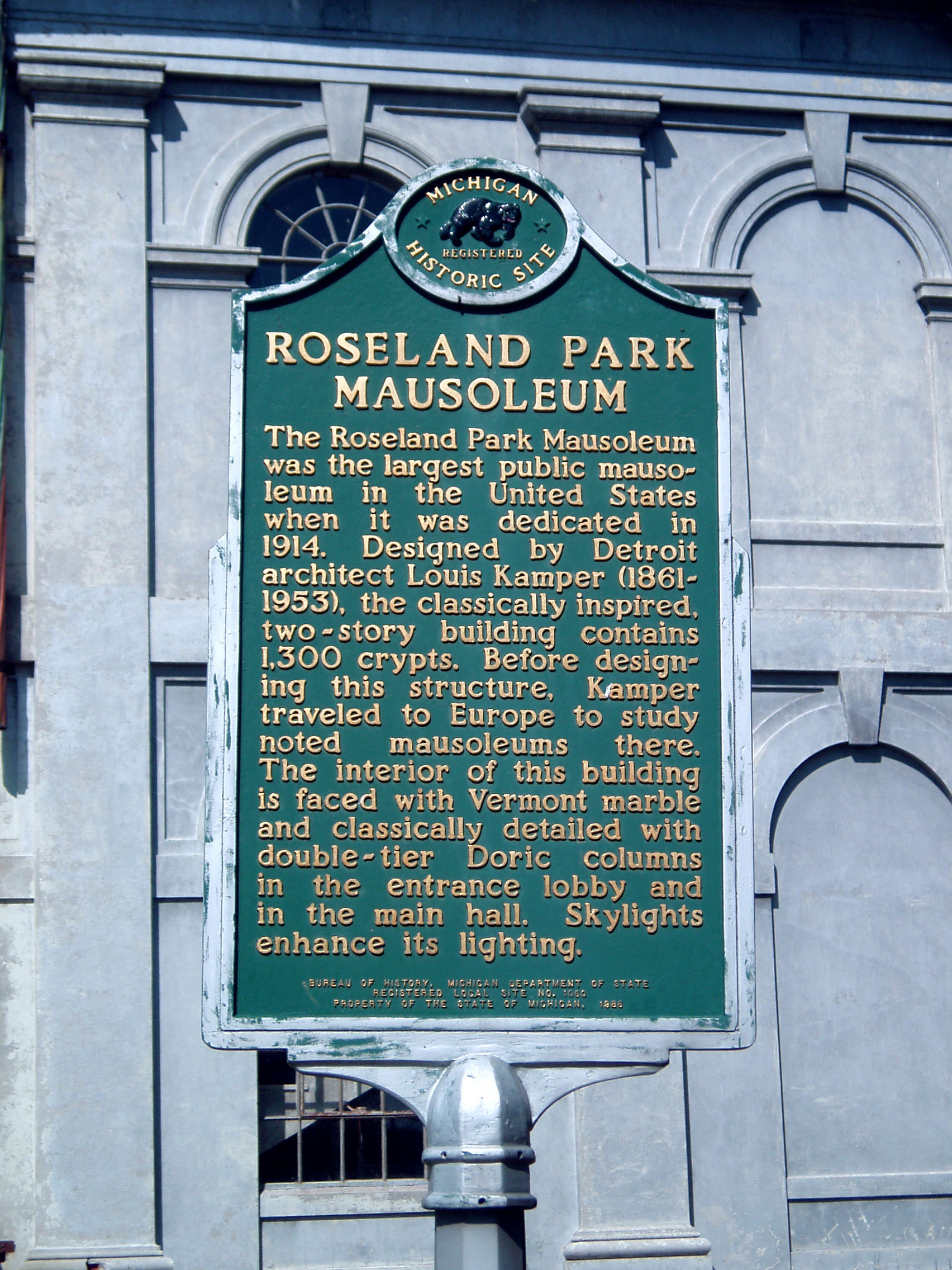

This is one of only four mausolea currently
listed on the Michigan Historic Register. Hecatomnus ruled a small Asia Minor
kingdom on the Mediterranean
in the earl y
fourth century BC. Halicarnassus was the capitol city. He died in 377 BC and
his son, Mausolus, became king. Mausolus was, apparently, a very
popular ruler who introduced many element of Hellenic culture to his kingdom.
He spoke Greek, encouraged the practices of Greek democracy and, similar to
Thomas Jefferson, favored Greek architecture. He died in 353 BC. His queen,
Artemisia, decided to spare no expenditures in building a structure for his
bones. The most accomplished architects, designers, sculptors and artists were
recruited in Greece and brought to Halicarnassus to erect a magnificent tomb
for Mausolus. They accomplished their work so spectacularly that the tomb of
Mausolus at Halicarnassus became one of the seven wonders of the ancient world.
In addition, Mausolus gave his name to the term mausoleum, meaning a classical
style building containing crypts for above ground internment. Although the
tomb of Mausolus and his wife survived for 17 centuries, earthquakes in the
fourteenth century AD destroyed the building and, by 1404, it was rubble. The
British Museum excavated the site in the mid-nineteenth century. Their archeologists
located statues of Artemisia and Mausolus and took them to London where they
are now on display.
y
fourth century BC. Halicarnassus was the capitol city. He died in 377 BC and
his son, Mausolus, became king. Mausolus was, apparently, a very
popular ruler who introduced many element of Hellenic culture to his kingdom.
He spoke Greek, encouraged the practices of Greek democracy and, similar to
Thomas Jefferson, favored Greek architecture. He died in 353 BC. His queen,
Artemisia, decided to spare no expenditures in building a structure for his
bones. The most accomplished architects, designers, sculptors and artists were
recruited in Greece and brought to Halicarnassus to erect a magnificent tomb
for Mausolus. They accomplished their work so spectacularly that the tomb of
Mausolus at Halicarnassus became one of the seven wonders of the ancient world.
In addition, Mausolus gave his name to the term mausoleum, meaning a classical
style building containing crypts for above ground internment. Although the
tomb of Mausolus and his wife survived for 17 centuries, earthquakes in the
fourteenth century AD destroyed the building and, by 1404, it was rubble. The
British Museum excavated the site in the mid-nineteenth century. Their archeologists
located statues of Artemisia and Mausolus and took them to London where they
are now on display.
There have been changes over time in how Americans treat the bodies of their friends and relatives after death. Underground burial is still popular, but cremation seems to be increasingly frequent. The operators of Roseland Park cemetery must have believed there was a substantial market for above ground burials early in the last century. They commissioned Louis Kamper to design what was the largest mausoleum in the United States when it opened. It provided at least 1,300 crypts. As you can see, this is an attractive and soothing classical style building.
Architect: Louis Kamper
Date of construction: 1914
Architectural style: Classical Revival
Use in 2009: Mausoleum
State of Michigan Registry of Historic Sites: P24,328 Listed January 27, 1983.
State of Michigan Historical Marker: Erected June 16, 1986
National Register of Historic Places: Not listed
Photograph: Ren Farley, June 29, 2009
Description prepared: July, 2009